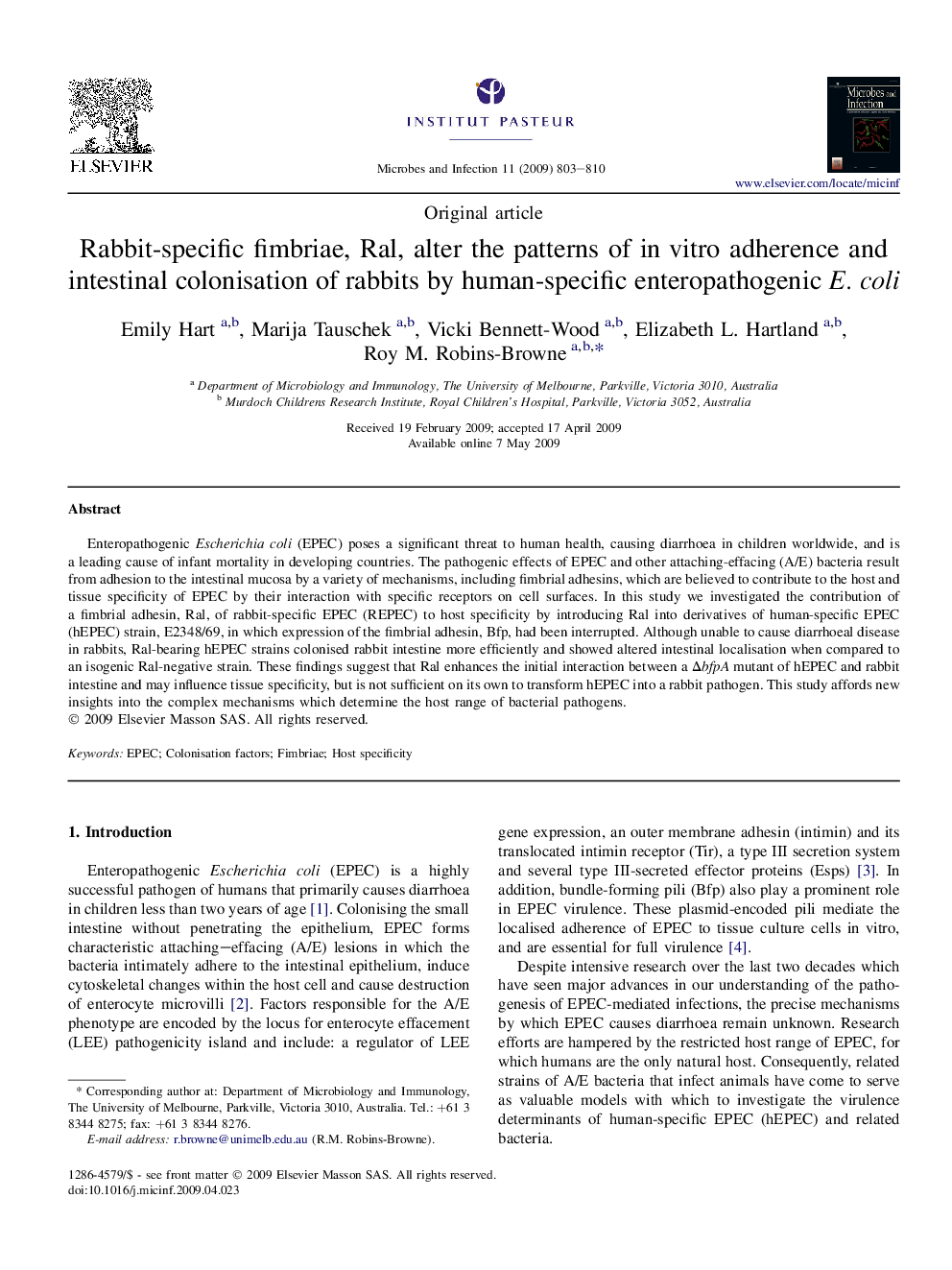| کد مقاله | کد نشریه | سال انتشار | مقاله انگلیسی | نسخه تمام متن |
|---|---|---|---|---|
| 3415464 | 1593649 | 2009 | 8 صفحه PDF | دانلود رایگان |

Enteropathogenic Escherichia coli (EPEC) poses a significant threat to human health, causing diarrhoea in children worldwide, and is a leading cause of infant mortality in developing countries. The pathogenic effects of EPEC and other attaching-effacing (A/E) bacteria result from adhesion to the intestinal mucosa by a variety of mechanisms, including fimbrial adhesins, which are believed to contribute to the host and tissue specificity of EPEC by their interaction with specific receptors on cell surfaces. In this study we investigated the contribution of a fimbrial adhesin, Ral, of rabbit-specific EPEC (REPEC) to host specificity by introducing Ral into derivatives of human-specific EPEC (hEPEC) strain, E2348/69, in which expression of the fimbrial adhesin, Bfp, had been interrupted. Although unable to cause diarrhoeal disease in rabbits, Ral-bearing hEPEC strains colonised rabbit intestine more efficiently and showed altered intestinal localisation when compared to an isogenic Ral-negative strain. These findings suggest that Ral enhances the initial interaction between a ΔbfpA mutant of hEPEC and rabbit intestine and may influence tissue specificity, but is not sufficient on its own to transform hEPEC into a rabbit pathogen. This study affords new insights into the complex mechanisms which determine the host range of bacterial pathogens.
Journal: Microbes and Infection - Volume 11, Issues 8–9, July–August 2009, Pages 803–810